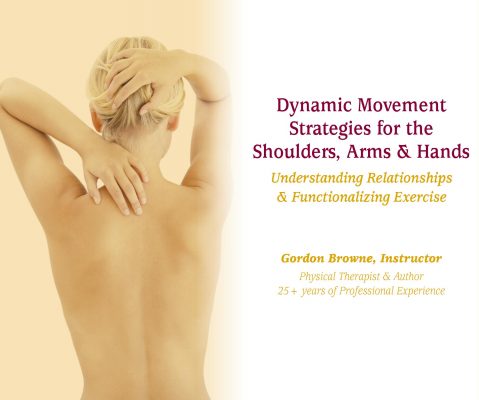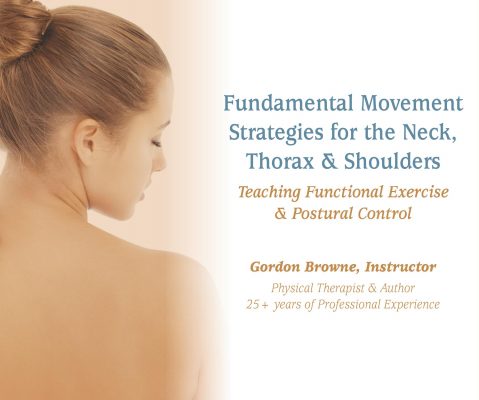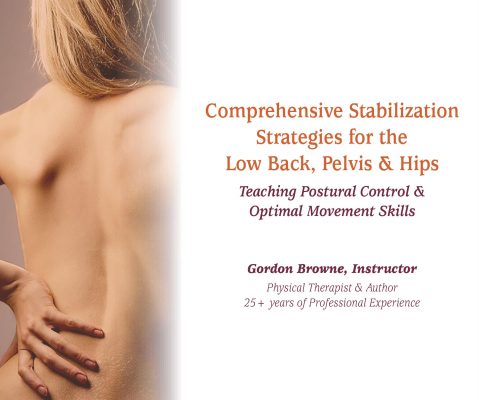Tai Chi & Yoga as Rehabilitative Exercise
Applications to Spine, Ortho & Seniors
16 Hours/CEUs
Course Description
Tai Chi is more than a martial art or a moving meditation and Yoga is more than twisting yourself into a pretzel—they are sophisticated movement systems that have great potential for application to a rehab setting. In this course we will break down and simplify common tai chi movements and yoga poses into stances, postures, steps and arm movements/positions, then put everything together in ways that integrate and optimize relationships between the upper and lower body. In this fun and interactive course you will participate in gentle movement, as well as observe and analyze tai chi and yoga modifications, then discuss clinical relevance and applications to a wide variety of rehab-related conditions. Topics range from:
- Lumbar stabilization to knee alignment & joint replacement
- Balance improvement & gait facilitation to fall prevention
- Pelvic balancing to thoracic mobilization & cervical stabilization
- Gleno-humeral impingement to scapular dyskinesia
- Orthopedic, neuro & geriatric applications
We will also discuss and demonstrate the importance of Pattern Specificity, making exercise more informational by making it resemble the motor behavior we are trying to influence, and investigate the differences between Static and Dynamic Integrated Movement Principles. So come spend the weekend with us—you will never look at movement and exercise the same again!
Course Objectives
By the completion of this course, the participant will be able to:
- Define Regional Interdependence & Specificity Principle
- List the two main differences between Static & Dynamic Integration exercise principles
- Demonstrate basic proficiency in three rotational/weight shifting movements & list benefits for: lumbar stabilization, hip/knee replacements, balance/fall prevention
- Explain the relevance of the phrase ‘proximal mobility and distal stability’ in the lower extremity system & list benefits for foot, ankle or knee conditions
- Explain the relevance of the phrase “proximal mobility facilitates distal mobility’ in the upper extremity system & list benefits for shoulder, elbow or hand conditions
- Define the terms ‘high horizon’ & ‘weight under-side’ and list benefits for cervical, gleno-humeral &shoulder girdle health
Course Outline
Lab sessions include experiential movement, partner observation, facilitation techniques, modifications & discussion of clinical relevance.
Day 1
7:45-8:00—Registration & Snacks
8:00-8:30—Introduction to Integrated Movement Principles
- Exercise Paradigms: Isolate or Integrate?
- Types of Integrated Movement/Exercise: Static & Dynamic
- Principles of Optimal Movement/Posture
8:30-10:00—Lab I: Pelvic Balancing—Addressing Lumbar & Issues
- Differentiated Yoga Poses: Hip Mobility & Lumbar Stability
- Recognizing the Habitual & Teaching the Non-Habitual: Directional Lumbar Instabilities
- Movement Reciprocity to Facilitate AP Pelvic & Trunk Balance
10:00-10:15—Morning Break
10:15-12:15—Lab II: Thoracic Work—Assisting & Balancing the Neck
- Integrating Arm & Head Movement with the Mid Back & Chest
- Rib Cage as Slinky: Encouraging Multi-Directional Thoracic Movement
- Cervical Stabilization & Cranial Postural Support
12:15-1:15—Lunch on your own
1:15-3:15—Lab III: Lower Extremity Alignment—Creating a Solid Foundation
- Encouraging the Tripod Foot: Forefoot/Rear-foot Differentiations
- Controlling Knee Valgus and Varus: Organizing Knee Over Foot
- Facilitating Balance: Peroneus Longus/Posterior Tibialis Competence
3:15-3:30—Afternoon Break
3:30-5:30—Lab IV: Shoulder Girdle Stabilization—Anchoring the Arm to the Back
- Dynamic vs. Static Scapular Stabilization
- Grand Coalition of the Arm: Shoulder ER & Scapular Posterior Tilt
- Scapular Myofascial, Gleno-Humeral & Elbow Benefits
Day 2
8:00-10:00—Lab V: Tai Chi Stances
- Grounding & Balancing Stances: Skeletal Weight Bearing
- Centering the Feet & Aligning the Knees: Balance & Fall Prevention
- Stabilizing the Pelvis & Lengthening the Low Back
10:00-10:15—Morning Break
10:15-12:15—Lab VI: Tai Chi Arm Positions & Movements
- Ladies Hands: Minimizing Unnecessary Effort
- Dynamic Scapular Stabilization & Integrating the Arm
- Gleno-Humeral, Elbow, Forearm & Hand Benefits
12:15-1:15—Lunch on your own
1:15-3:15—Lab VII: Tai Chi Turns & Steps
- Hip Rotation Mobility & Control: THR, FAI & Labrum
- Lumbar Stabilization, Balance & Fall Prevention
- Controlling Knee Valgus, Varus & Rotation: Knee Injuries, Patella & TKR
3:15-3:30—Afternoon Break
3:30-5:00—Lab VIII: Putting it Together—Integrating Upper & Lower Body
- Arms & Head Moving as Extension of Dynamically Moving Torso
- Appropriate Distribution of Movement & Proportional Use of Synergists
- Training & Balancing Pelvic Force Couples: Associating with Arm Motion
5:00-5:30—Bonus Material & Wrap Up
- Toys & Tools: Staff, Sword & Straps
- Review & Reinforcement of Course Objectives
- Questions, Answers & Wrap Up
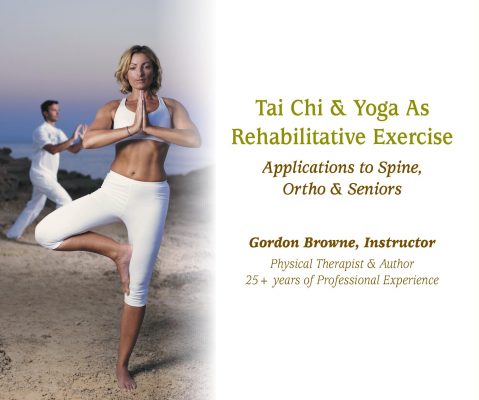
State Approvals
We submit all our courses for continuing education approval in the state in which it is being held, if required. For more information please visit our State Approvals page
Registration Fee
| Single Registrant | $425 |
| 2 to 4* | $405 |
| 5 or more* | $370 |
*Price per person when registering at the same time. Please call if paying separately.
Brochure
Download the BrochureTestimonials
“Awesome course! I will use this material immediately and incorporate with balance issues and gait training.”
“Great information, concepts really makes sense and like they will be highly beneficial. ”
“Excellent course! I’ll be incorporating dynamic movements with everyone; geriatrics to athletes!”
“Loved all the movement throughout the weekend! Functionally relevant material that’s immediately applicable. Great class!”
“I sure appreciate Gordon’s level of knowledge and experience. Looking forward to next class!"
“Great class, don’t change a thing!”
“I appreciate the thoughtful explanations of biomechanics and outside the box thinking relative to movement. Nice thoughts on functional movement evaluations. ”
“My knowledge and awareness of movement patterns has markedly improved, thank you!”
“Really loved the active learning of movement, I could feel how postural changes improved muscle activation. ”
“Thank you for another great class! I’ll use this with gait training, balance and bilateral integration with neuro pts. ”
“Really great course! Looking forward to taking more!”
“Gordon’s enthusiasm is catchy! This course really pushed my limits to new parameters-how refreshing!”
“Everything I learned in this class is easily applicable to the rehab setting. Thank you for a great course!”
 Gordon Browne, PT
Gordon Browne, PT
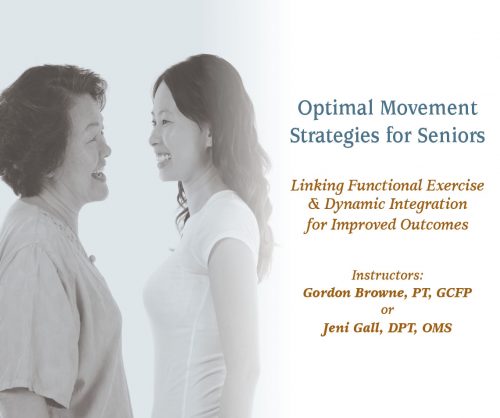
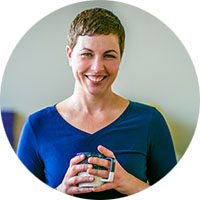 Jeni Gall, DPT
Jeni Gall, DPT

